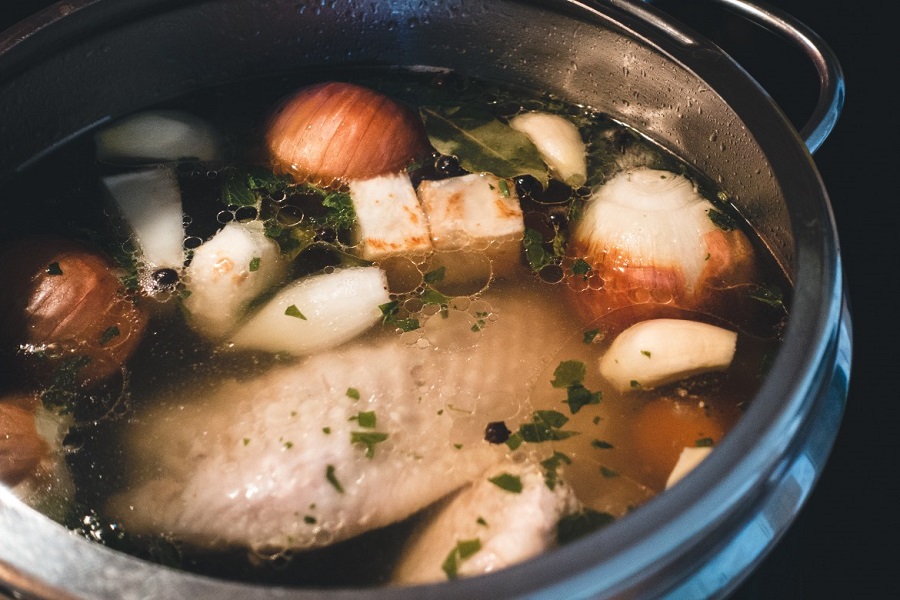Broth has gotten a lot of hype lately, and for good reason! It has myriad health benefits and is so easy to make. We see many patients that have gut dysbiosis (an imbalance in the bacteria), causing symptoms ranging from diarrhea or constipation to bloating or heartburn. Broth is healing for the gut due to gelatin, glutamine, minerals, healthy fats and protein – all building blocks of an intestinal system that keeps pathogens out and helps you properly absorb nutrients.
It is best to make broth at home so you can source high-quality ingredients and avoid additives or problematic contaminants from the packaging like BPA from cans – a hormone disruptor.
QUICK TIP:
Purchasing cans that state “BPA-free” may mean you are still getting BPS or BPF, which are also hormone disruptors just as potent, if not more, than BPA.
For an in-depth list of the healing properties of broth, check out this post by Chris Kresser.
Many people use the terms stock and broth interchangeably. Some say that technically, a stock is made with bones (and vegetables and aromatics) while a broth has no bones. Whatever you want to call it, it is easy, nourishing, and a great base for soups. You can even sip it plain! Here is a basic recipe that is amenable to personalizing.
Chicken Stock Recipe
- 1 Whole free-range chicken or 2 to 3 pounds of bony chicken parts, such as necks, backs, breastbones and wings*
- Gizzards from one chicken (optional)
- 2-4 Chicken feet (optional)
- 4 Quarts cold filtered water
- 2 Tablespoons apple cider or white vinegar
- 1 Large onion, coarsely chopped (eliminate if you have SIBO – small intestinal bacterial overgrowth)
- 2 Carrots, peeled
- 3 Celery stalks
- 1 Bunch parsley
*Note: Farm-raised, free-range chickens give the best results. Many conventionally-raised chickens will not produce stock that gels. Additionally, choose organic vegetables to eliminate pesticide exposure.
- If you are using a whole chicken, cut the chicken into several parts. Place chicken pieces in a large stainless steel pot with water, vinegar and all vegetables except parsley. Bring to a boil, and remove scum that rises to the top.
- Reduce heat, cover and simmer for 6 to 8 hours. The longer you cook the stock, the richer and more flavorful it will be. About 10 minutes before finishing the stock, add parsley. This will impart additional mineral ions to the broth.
- Remove whole chicken or pieces with a slotted spoon. If you are using a whole chicken, let cool and remove chicken meat from the carcass. Reserve for other uses, such as chicken salads, enchiladas, sandwiches or curries.
- Strain the stock into a large bowl and reserve in your refrigerator until the fat rises to the top and congeals. Skim off this fat and reserve the stock in covered containers in your refrigerator or freezer.
- If you cool the stock down and it is jiggly and gelatinous, that’s a good thing! That’s the healing gelatin that you just worked so diligently to extract from the bones. Simply heat it up and it’ll return to liquid.
- Alternatively, you could put everything but the parsley into a slow cooker and follow steps 2 through 4. Don’t fret if you can’t get back to your slow cooker in 6 hours – cooking up to 12 or even 24 hours yields more flavor and often, more gelatin. You’ll want to check to see if you need to add more water as it simmers, though.
Adapted from Weston A. Price


